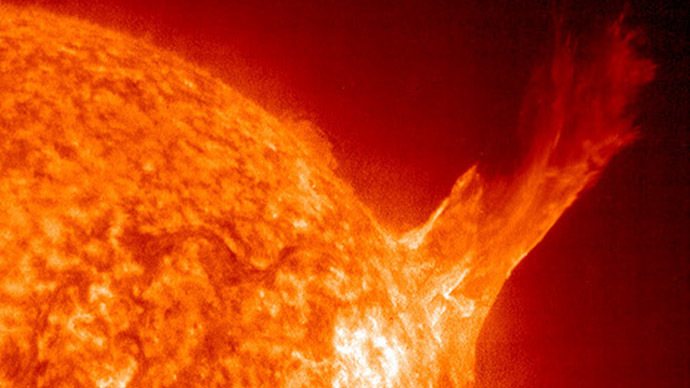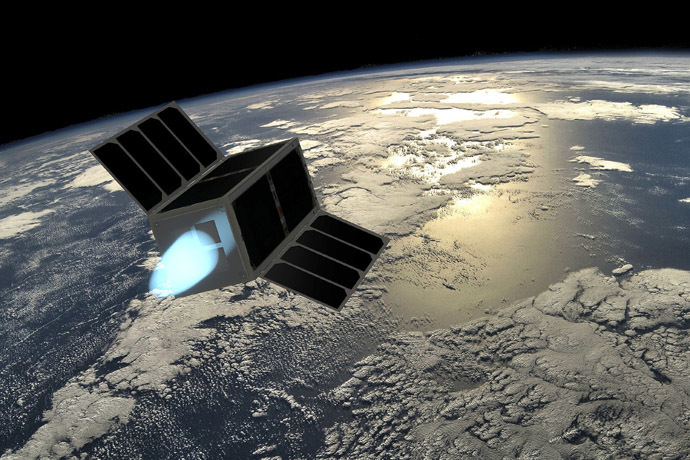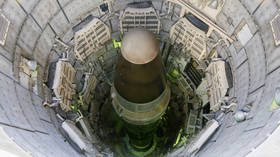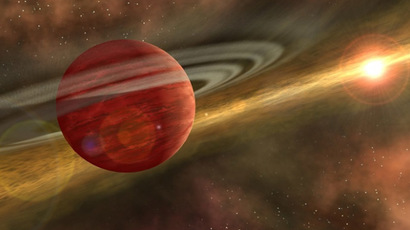Near miss: Enormous solar blast could have devastated Earth in 2012

Citizens of Earth had no idea how close the planet was to getting slammed with a devastating solar flare back in July 2012, but scientists claim we only missed the damaging event by nine days.
As noted by Reuters, scientists found that a series of coronal mass ejections – powerful eruptions on the sun’s surface that send waves of magnetized plasma through the solar system – occurred last year sometime between July 22 and 23. The blasts traveled through Earth’ orbit, but narrowly missed colliding with the planet.
According to a new report published in the Nature Communications journal on Tuesday, if the solar eruptions occurred just nine days earlier, they would have likely hit Earth and caused a great deal of damage to the planet’s magnetic field. Fortunately for us, the Earth was on the other side of the sun by that point.
Scientists believe the blast would have equaled the might of the most powerful magnetic storm ever recorded: the Carrington event of 1859, which took down telegraph services around the world.
“Had it hit Earth, it probably would have been like the big one in 1859, but the effect today, with our modern technologies, would have been tremendous,” Janet Luhmann, part of the STEREO (Solar Terrestrial Observatory) team a University of California Berkley researcher, said to Reuters.
Specifically, a blast that powerful could bring down electrical grids, knock down satellites and GPS technology, and ultimately cost nations billions of dollars in damages. Considering modern society’s reliance on such technology to function, it would be extremely disruptive.

Last year, a study produced with the Atmospheric and Environmental Research group found that a solar flare equivalent to Carrington could cost the world $2.6 trillion.
“An extreme space weather storm – a solar superstorm – is a low-probability, high-consequence event that poses severe threats to critical infrastructures of the modern society,” said Ying Liu, a physicist at China’s State Key Laboratory of Space Weather to Forbes.
“The cost of an extreme space weather event, if it hits Earth, could reach trillions of dollars with a potential recovery time of 4-10 years,” Liu added. “Therefore, it is paramount to the security and economic interest of the modern society to understand solar superstorms.”
Although flares occur every day during the sun's solar maximum – a period in the sun’s cycle highlighted by increased solar activity – they are rarely as powerful as the one that struck Earth in 1859. Still, the amount of damage they can inflict means preparation is tough but necessary,
“People keep saying that these are rare natural hazards, but they are happening in the Solar System even though we don’t always see them,” Luhmann told Forbes. “It’s like with earthquakes – it is hard to impress upon people the importance of preparing unless you suffer a magnitude 9 earthquake.”














